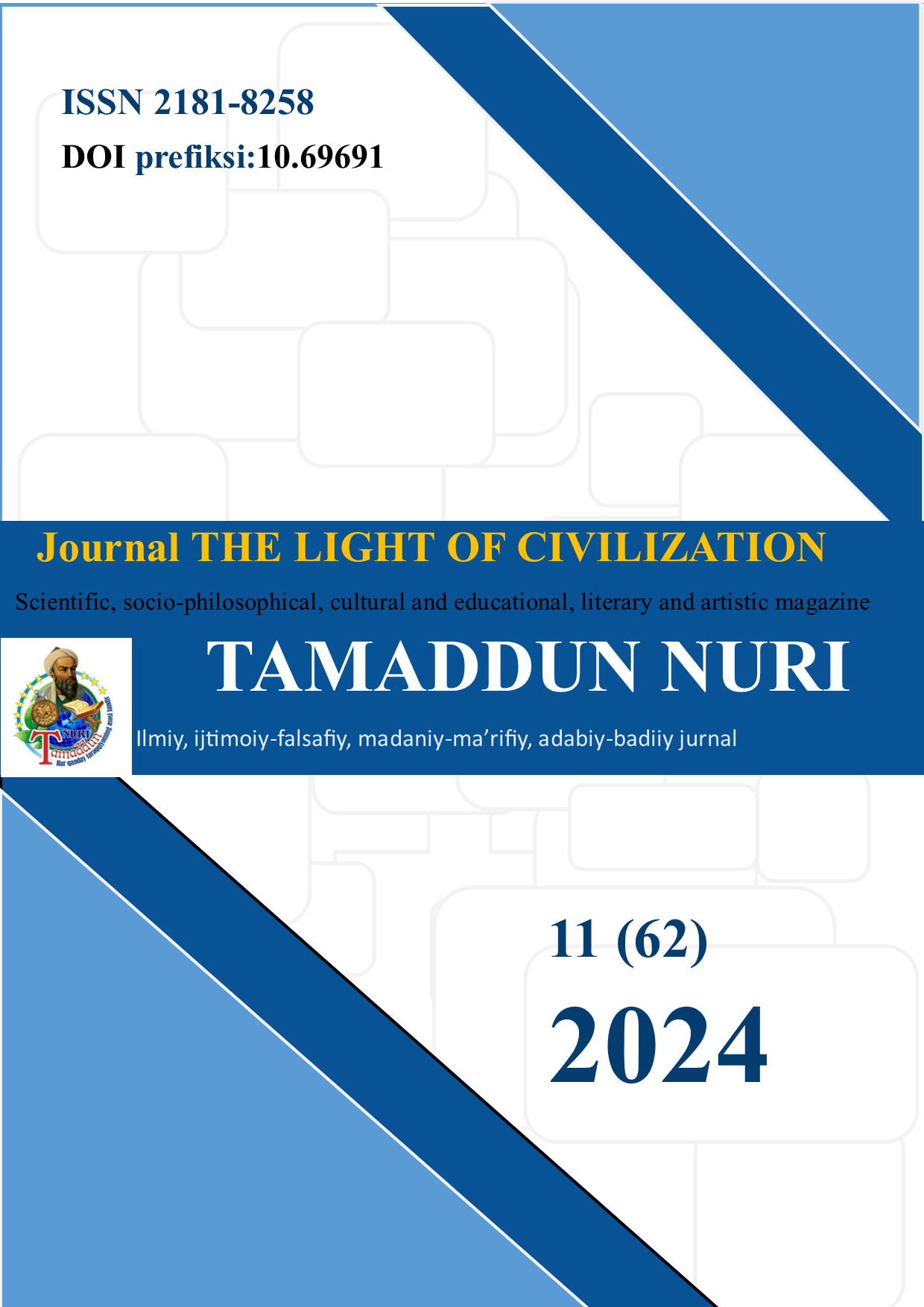THE NATIONAL DRESS OF THE KARAKALPAK PEOPLE
DOI:
https://doi.org/10.69691/yj8m9647Keywords:
national clothes, dzhegde, ak kymeshek, Kyzyl kymeshek, tayshaky, kylka, postyn, saukele, kok koylek, chapanAbstract
This study is dedicated to exploring the unique characteristics of traditional clothing that represent the national identity of the Karakalpak people. It examines the distinctiveness of men’s and women’s national outfits, highlighting their differences. During the research process, special attention was given to the patterns, colors, and appearances of Karakalpak national clothing, as well as the meanings they convey and the materials used to make these garments. The scientific analysis of the research topic revealed how the external appearance, colors, and patterns of the Karakalpak national clothing are influenced by the geographical environment, social conditions, and family life, as well as how women’s clothing choices vary depending on age and occasion, reflecting deeper meanings.
References
Материалы XII Республиканской научной конференции молодых ученых Каракалпакстана – Нукус.: Илим, 2012. – C.110.
Материалы международной научно-теоретической конференции Вопросы археологии и истории Южного Приаралья – Нукус.: Каракалпакстан, 2011. – С. 96.
Қарақалпақстанның жаңа тарийхы. Қарақалпақстан XIX әсирдиң екинши ярымынын XXI әсирге шекем – Нөкис.: Каракалпакстан, 2003. – B.128,129,130,132
Этнография каракалпаков. XIX-начало XX века (материалы и исследования) – Ташкент.: издателство «ФАН» Узбекской ССР, 1980. – С. 66.
Алламуратов А. Манги мийрас – Нукус.: Билим, 1993. - B. 42-44.
Высокая духовность – непобедимая сила – Ташкент.: Манавият, 2008. – С. 29.
Downloads
Published
Issue
Section
License
Copyright (c) 2024 Journal of Tamaddun Nuri

This work is licensed under a Creative Commons Attribution-NoDerivatives 4.0 International License.



